Your basket is currently empty!
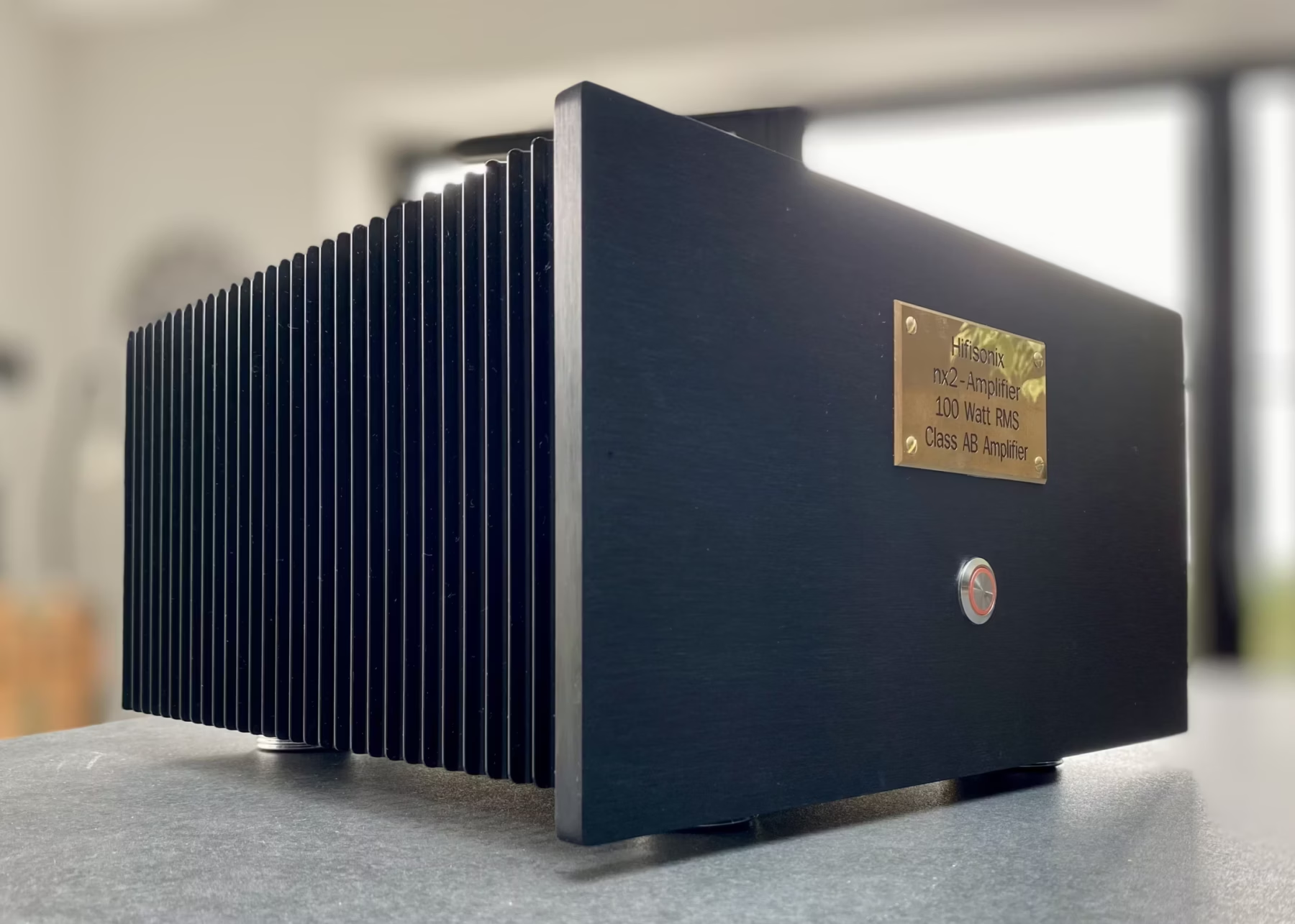
The New nx2-Amplifier: a 100W CFA Power Amp
The nx2 produces >100W into 8 ohms and >200W into 4 Ohms both channels driven. At 100W into 8 ohms, the measured distortion is below 30ppm while at 200W, it is below 40ppm. The amplifier features 700ns rise/fall times and an EF2 output stage using three pairs of output devices, allowing it to drive difficult loads. It uses SMD devices for much of the small signal part of the amplifier, which ensures it is future proof, given that many TO-92 devices are no longer readily available.
Click here to buy 2 off high quality nx2-Amplifier PCBs
Click here to buy a PSU+Inrush controller PCB
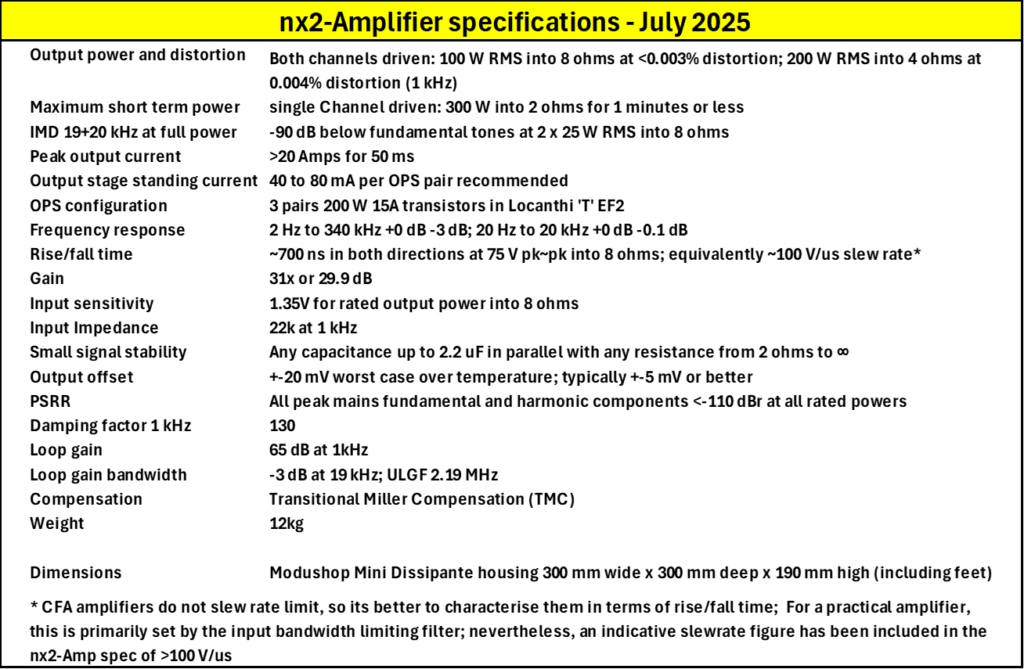
Click here to download the full build document with circuit description and measurements
Click here If you’d prefer to have me build you a nx2-Amplifier exactly like the one pictured above but with the rear plate silkscreened, for £1699-00.
I used a Modushop Mini Dissipante chassis (Part# 1MNPDA04/33/300N) for my build. Gianluca at Modushop can drill and mill the heatsinks and rear panel to the Hifisonix Universal Chassis spec. Just send him the linked to zip file when you order your chassis. Note, the Hifisonix Universal Chassis drill spec will also cater for the sx, kx2 and original nx amplifiers.
If you have any questions, let me know, and thanks for visiting hifisonix.com. As always, I am here to help with any technical issues.
nx2-Amplifier: Some Background
In 2012, shortly after I published the sx-Amplifier, a very simple pared-down class A CFA, I tweaked the design to come up with the nx-Amplifier that delivered 100 Watts RMS into an 8 Ohm load and simulated at 0.007% distortion at 80 Watts RMS. Like the sx-Amp it was based on, the idea was to keep the amplifier simple, and easy to build but still have good overall results and sound. The transimpedance stage (aka VAS) was a simple single transistor implementation preceded by a standard CFA diamond buffer input stage, while the OPS was an EF2. Two iterations of the nx-Amp board were made – the initial release in 2012 and then a further small update in 2016. About 150 sets of each release were sold through Jim’s Audio and from what I can tell, most of those were built.
Accompanying the amplifier boards was a rather complex and unwieldy power supply and protection board that I called the ‘PSU +Prot’ that offered +-50V DC rails, DC offset and overload current protection, and power ON/OFF speaker muting. The Zobel network for the amplifier modules was, unusually and not very cleverly, incorporated onto the PSU +Prot Board. I received lots of excellent feedback about the sound which builders loved. However, in retrospect, I think some aspects of the design were idiosyncratic as described in the presentation.
Fast forward 13 years to 2025, I’ve learned a lot, had much feedback, and so it is time for an upgrade . . . this can be approached in two ways: start with a blank sheet of paper and a brand-new design or start with what is a good basic amplifier and improve it, ending up with something altogether better than the original. I decided on the latter course of action, adhering to the ‘if it ain’t broke, don’t fix it, just upgrade it’ dictum.
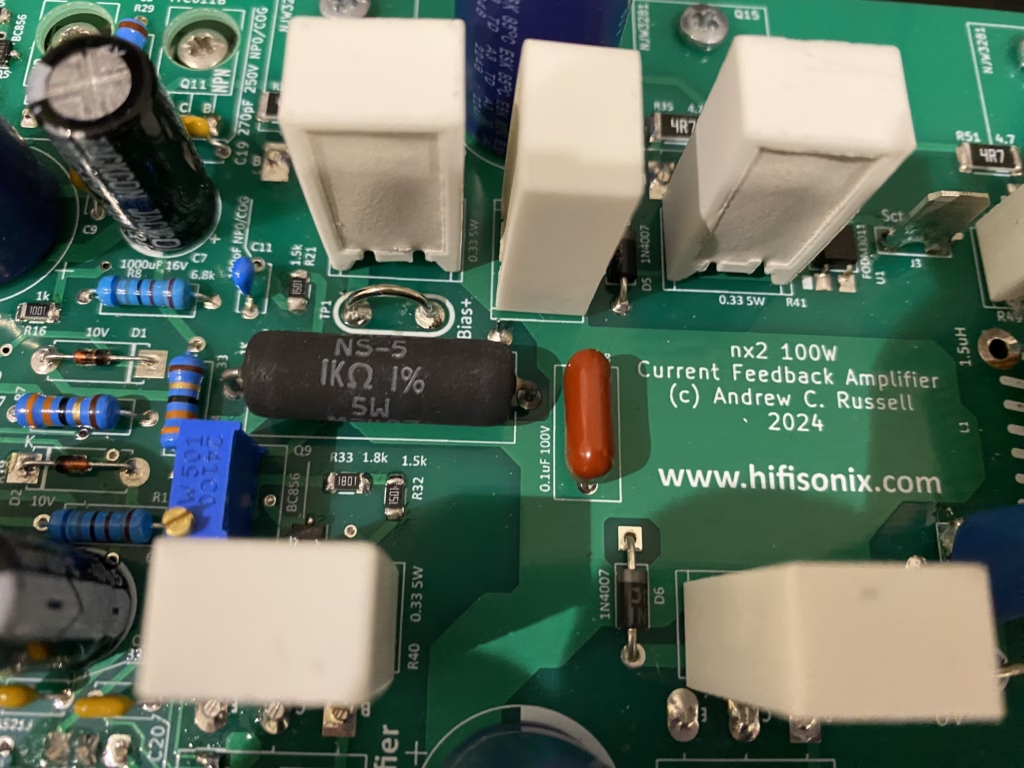
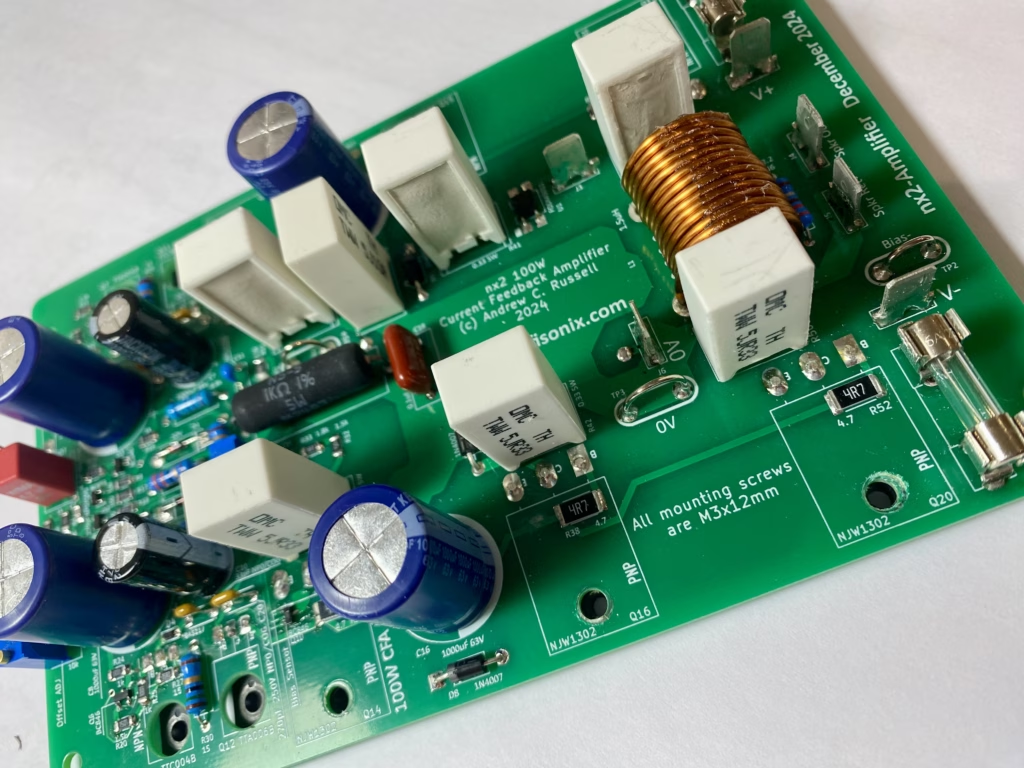
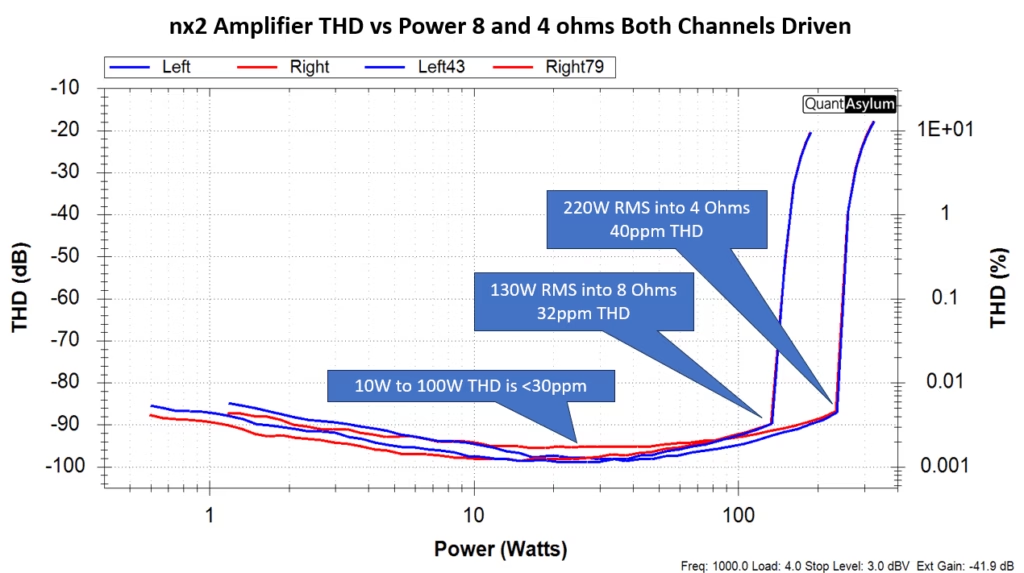
How does it sound? Big punchy bass with a lush, detailed midrange and what I’d describe as a delicate, open top end. I use my nx2 with my B&W 703s to listen to jazz and classical music, but it also pairs fantastically with the KEF LS50s that feature even better coherence in the top two octaves of the audio band. Outstanding imaging is an absolute requirement for me, and the nx2 complements good recordings in this aspect wonderfully in my view, where a lesser amp might fail by closing in the sound stage. The bottom end is particularly good, and I put that down to the triple EF2 output stage and the increased loop gain (about 12 dB), allowing it to deliver high LF currents accurately. I have written elsewhere about the fact that current feedback amplifiers cannot slew rate limit, and this is evidenced, in amongst other things, with exceptionally low IMD (19+20kHz) at full power, which is responsible for the very delicate, open top end on this amplifier – a characteristic the 15W RMS output class A kx2 also shares by the way.
You could argue that, as the designer and builder of the nx2, my vision is clouded by my attachment to the nx2 and the CFA topology. You of course are entitled to make that observation. However, I have heard a lot of outstanding amplifiers (and some not so good ones) over the last 50 years or so, and my contention is the nx2 is an outstanding amplifier that I would quite happily put up against any other. The nx2 incorporates all of the latest thinking in linear power amplifier design with regard to PCB layout and compensation, and coupled with modern, high-performance semiconductors, means legacy amplifiers of similar power ratings aren’t much of a match for it. If you want to enjoy is at its full potential as a high-end amp, be sure to marry it to a good power supply – don’t skimp on this and also make sure it has adequate heatsinking.
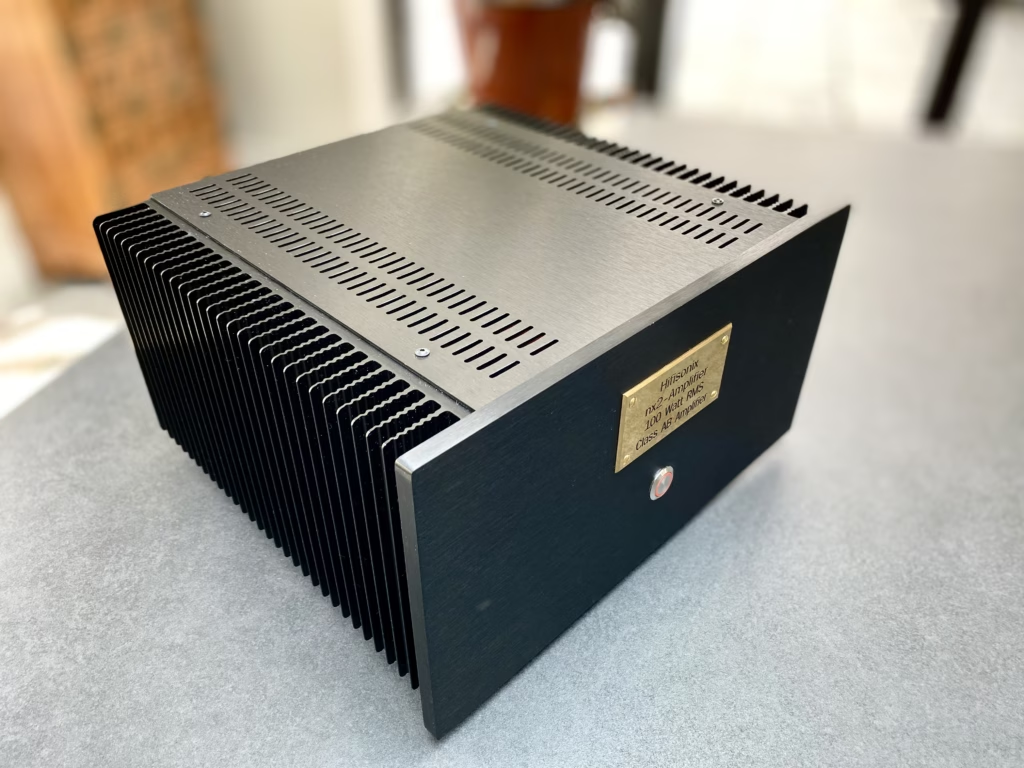
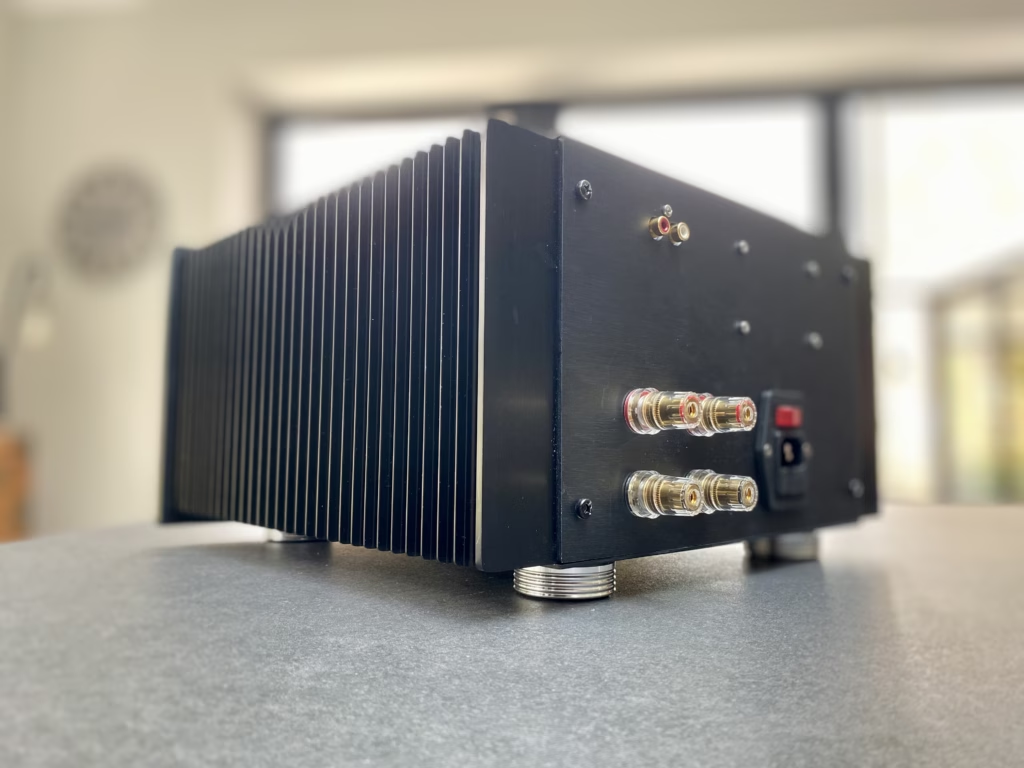
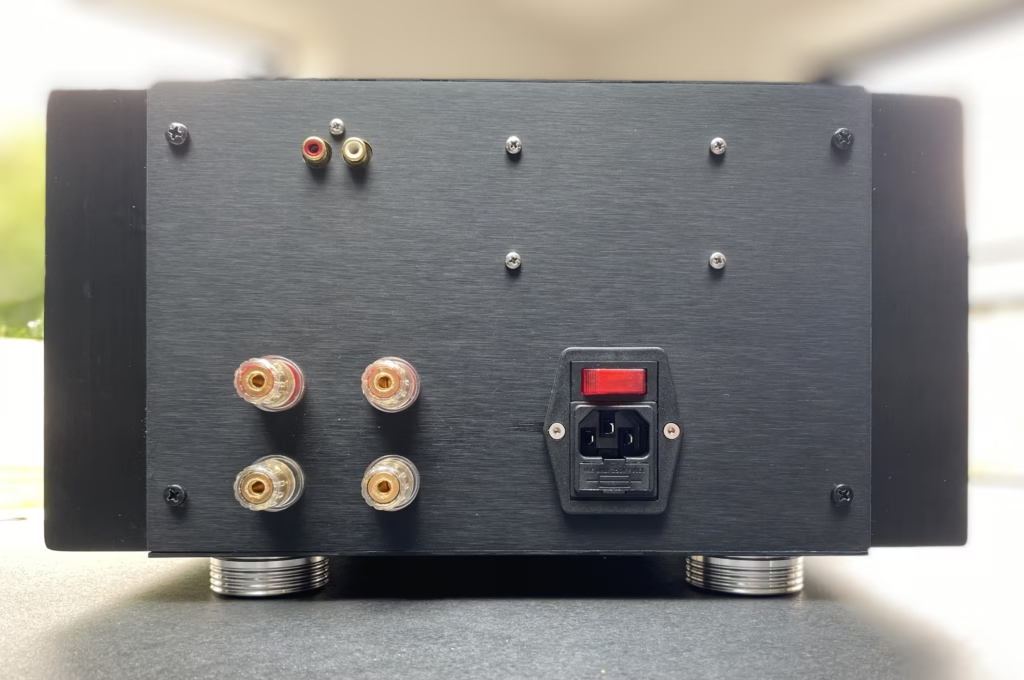
Comments
5 responses to “The New nx2-Amplifier: a 100W CFA Power Amp”
-
Hello Dule,
R53 in conjunction with R44 is to allow the voltage appearing across the opto LED to be trimmed so you can set the trip current. -
Hello Dule
I am travelling at the moment – I will answer you on Saturday.
Rgds -
What is the function of R53 resistor?i can find it on schematik.Also . I find that smd1206 is better suited in his place that 0805 sugested in bom.
-
Hi, I strongly recommend a ripple eater (either REP or the Micro Ripple Eater) for use with class A amplifiers simply because in a class A amplifier, the current draw on the power supply is heavy (e.g. 1.1A on the kx2 per channel and 2.2A on the ax-Amplifier) and this results in high PSU mains related ripple (at 2x the mains fundamental and related harmonics) plus the signal related ripple on the supply rails. This means that achieving a ripple noise peak of better than -90 dB on a class A amp is difficult, even with good wiring practice. A well-designed ripple eater can improve this by another 20 to 30 dB to -110 to -120 dB. The PSRR on the kx2 (and the nx2) is good for a CFA power amp at about 80 dB in the midband (this in contrast to a high loop gain VFA where it might be 10-15 dB better in practice). Using a ripple eater on the kx2 allowed me to get the mains hum-related noise peaks at full power to -115 dBr (this is about -90 dBV at full power), which is a really excellent result in any circumstance. A similar result is possible on the nx2, although my build does not use a ripple eater and the mains noise floor peaks at full power (100W into 8 ohms) is -110 dBr, a ripple eater would improve this by a further 15 to 20 dB. Note the nx2 uses a cascode in the front end, which improves its PSRR over the kx2 – otherwise, both designs use a similar front end topology.
It is essential to note that a ripple eater will not ameliorate bad wiring practices where you have ground loops, cross-channel loops or common impedance noise problems. The idea of using a ripple eater is to take an already good amplifier and improve the noise performance to state-of-the-art.
-
Can you suggest to use REPS in nx2 amplifier or PS described here?
I am using kx2 amplifier withREPS and i am is very satisfied with it.
Leave a Reply